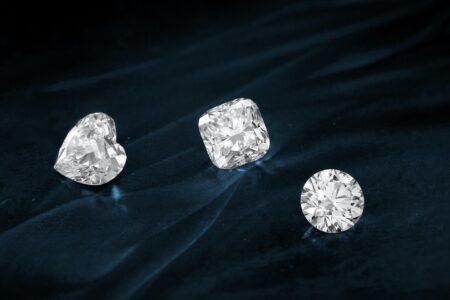- What is the so-called carat tax?
- Research by De Tijd shows that the diamond sector will have to pay more taxes.

Investing in diamonds and the carat tax
19 Jul 21
What is the so-called carat tax?
Diamond traders will no longer be taxed on their annual profit, but on the revenue instead. Up until now, they had to pay corporate tax on their annual declared profit. By changing the basis of the tax to the revenues generated, there will be fewer possibilities to commit fraud. After all, the Diamond Office registers all the transactions in Antwerp. The carat tax will also bring the endless discussions with the tax authorities regarding the real value of a diamond stockpile to an end. The diamond trades will be obligated to pay 33.30% tax on a minimum of 0.55% of the total revenue. This minimum percentage was implemented to leave room for tax deductions such as losses from previous years, notional interest and professional expenses.
Regarding what the carat tax will yield exactly – and if this will be to the advantage of the diamond traders or the exchequer – has been discussed tirelessly the past couple of years. To date, diamond traders payed approximately 20 million euros corporate tax annually. The government anticipates an extra income of 50 million euros through the carat tax. The Belgian Court of Auditors deems this potential extra income to be uncertain, because the calculation is based on obsolete information.

De Tijd’s research
The Belgian newspaper De Tijd decided to do its own research. They gathered the revenue figures, profits and tax contributions from the past couple of years of the 100 biggest diamond companies in Belgium. Together, these companies pay about 90% of the taxes laid down on the diamond sector.
These data show that these 100 diamond companies payed around 18.1 million euros tax in 2015. This is a higher amount than in 2014 (17.88 million euros) and 2013 (13.26 million). Will this change when the carat tax is implemented? In 2015 these same 100 companies declared their revenue to be 18.74 billion euros. In 2014 this was 20 billion and in 2013 16.5 billion euros. De Tijd calculated that if 33.99% taxes will be levied on 2.1% of their revenue, the 100 biggest diamond companies will have to pay an amount of 134 million dollars. When using the minimum percentage of 0.55 in their calculations, the results was 35 million euros in taxes. They thus concluded that, compared to the present scheme, a double amount of taxes will have to be paid.
Moreover, several indicators suggest that the diamond sector can expect a substantial revenue increase in 2016, which means the taxable amount will be much higher than in 2015. More revenue, more carat tax and more profit for the Belgian state. Last week, the Chamber has endorsed the carat tax, ensuring that, at the tail end of this year, the Belgian exchequer receives a nice Christmas gift.
For more information regarding diamond investment and resale options, you can visit BNT Diamonds, expert in diamond investment.
More articles concerning investing in diamonds:

